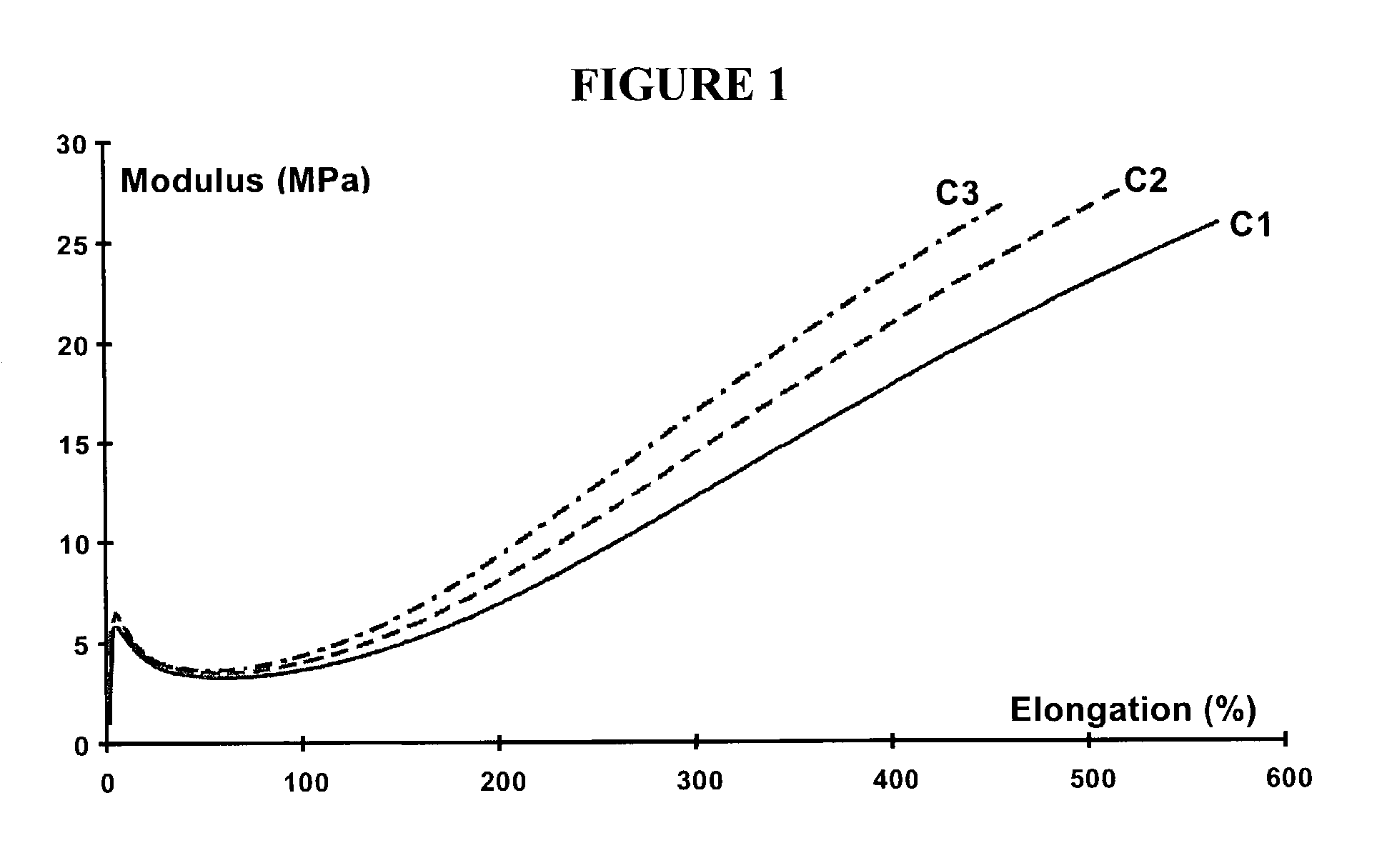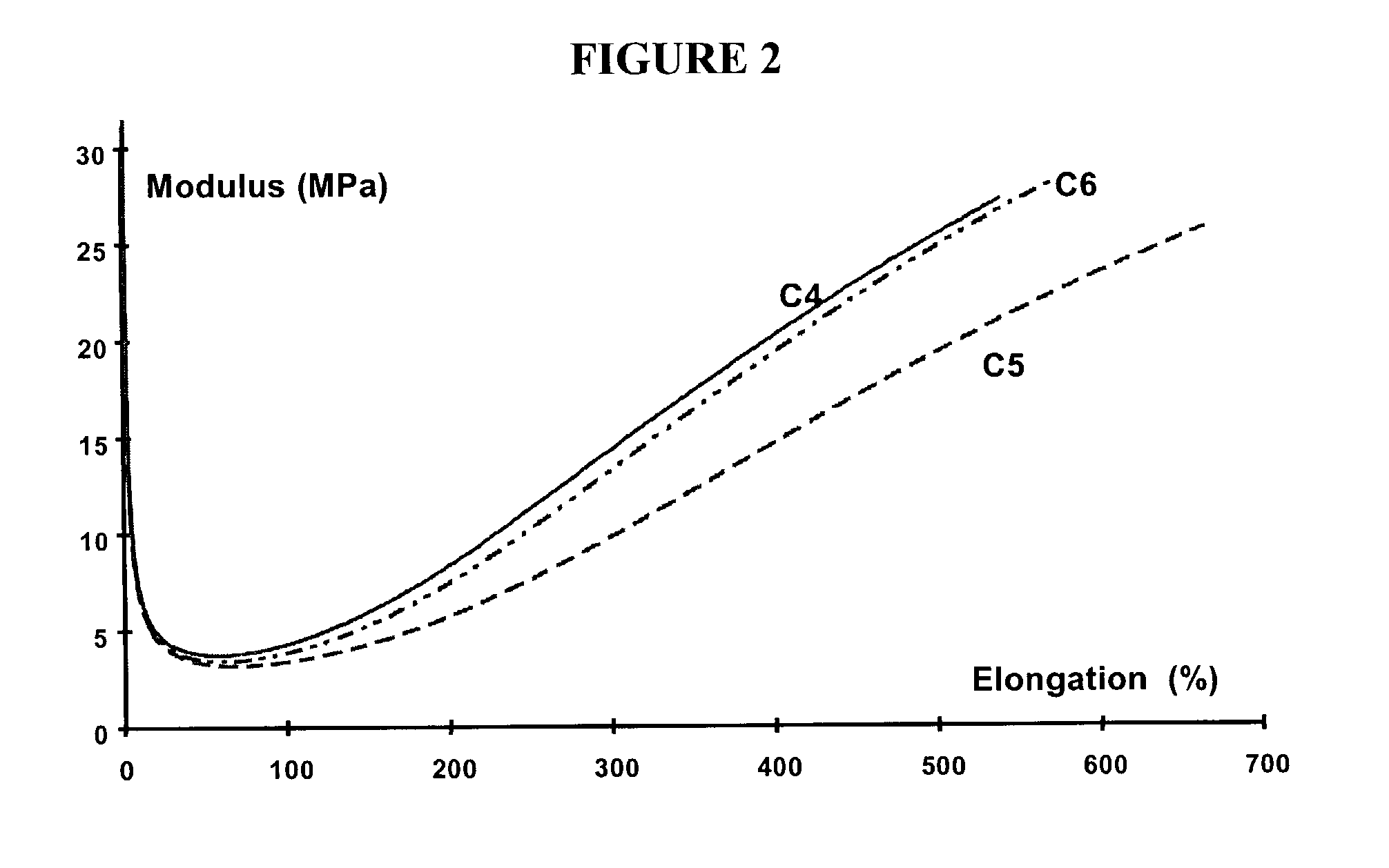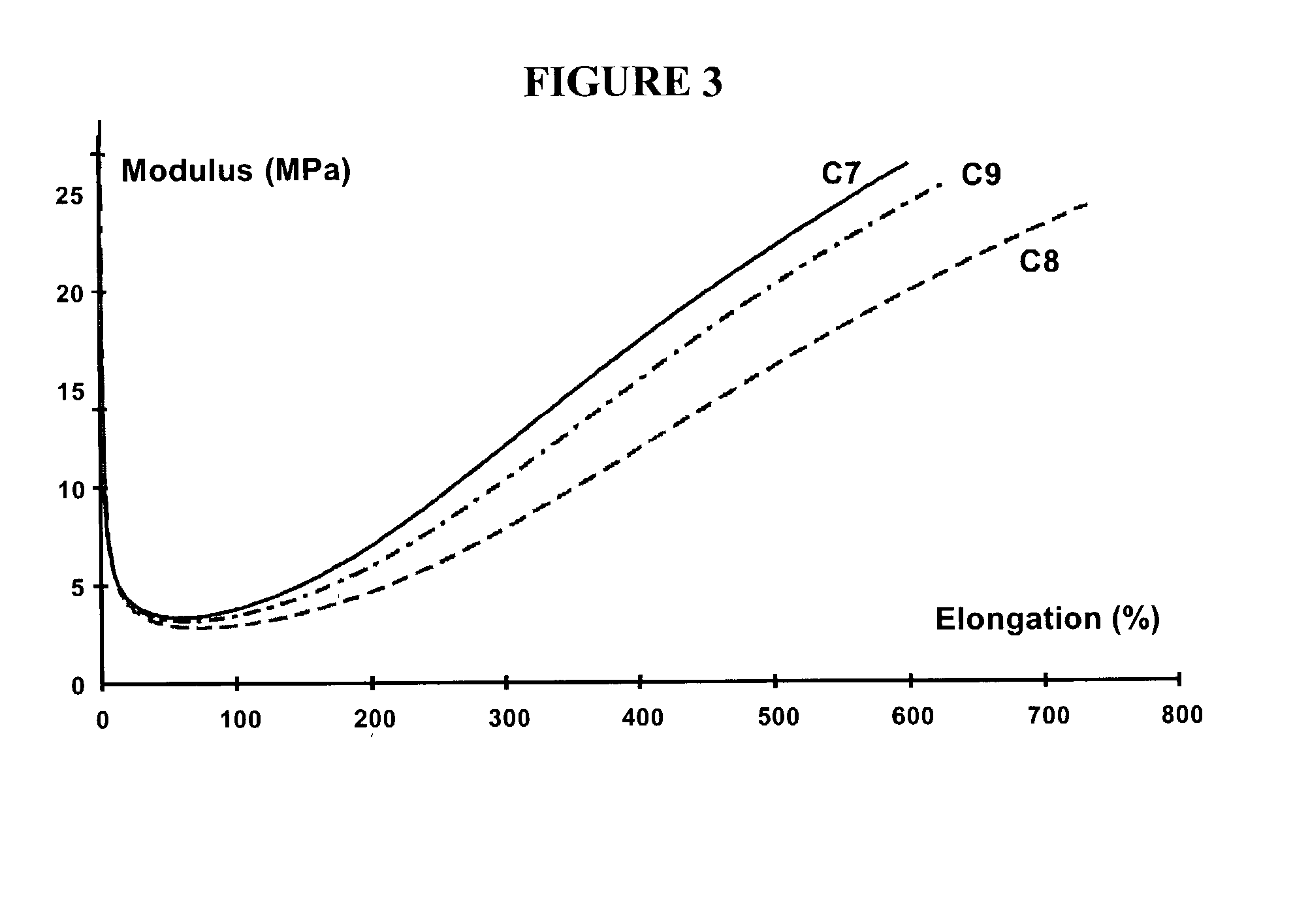Rubber composition for a tire comprising a reinforcing inorganic filler and an (inorganic filler/elastomer) coupling system
a technology of inorganic filler and rubber composition, which is applied in the direction of transportation and packaging, non-skid devices, other chemical processes, etc., can solve the problems of limiting dispersibility, more difficult to work, and reducing the effect of polysulfurized alkoxysilanes
- Summary
- Abstract
- Description
- Claims
- Application Information
AI Technical Summary
Benefits of technology
Problems solved by technology
Method used
Image
Examples
example 1
Preparation of the Rubber Compositions
[0132]For the following tests, two thermomechanical stages are used which are separated by a cooling phase, in the following manner: there are introduced into an internal laboratory mixer (0.4 liters), of the “Banbury” type, filled to 70% and the initial tank temperature of which is approximately 60° C., in succession, the elastomer(s), approximately one minute later ⅔ of the reinforcing inorganic filler and its associated coupling system, one minute later still the rest of the reinforcing filler, its associated coupling system, and the various additives with the exception of the antioxidant, the zinc oxide and the vulcanization system (sulfur and sulfenamide). A first thermomechanical working step is thus performed for about 3 to 4 minutes, until a maximum dropping temperature of about 165° is reached. The elastomeric block is then recovered and cooled. Then, a second stage is carried out in the same mixer with the same conditions: the elastome...
example 2
Characterization Tests
[0136]Test 1: In this first test, three rubber compositions (mixture of SBR and BR diene elastomers) reinforced with silica, which are intended for the manufacture of treads for tires are compared. The SBR elastomer is prepared in solution, and contains 26.5% styrene, 59.5% 1-2-polybutadiene units and 23% trans-1-4-polybutadiene units. The BR elastomer comprises 93% 1-4 cis units.
[0137]These three compositions are identical except for the following differences:[0138]Composition No. 1 comprises TESPT (6.4 phr) with DPG but without 1,2-DHP;[0139]Composition No. 2 comprises TESPT (6.4 phr) with which there are associated 0.25 phr (or 3.9% by weight relative to the quantity of TESPT) of 1,2-DHP and 1.5 phr of DPG (or about 1.9% by weight relative to the quantity of reinforcing inorganic filler); and[0140]Composition No. 3 comprises TESPT (6.4 phr) with which there are associated 0.5 phr (or 7.8% by weight relative to the quantity of TESPT) of 1,2-DHP and 1.5 phr of...
PUM
| Property | Measurement | Unit |
|---|---|---|
| glass transition temperature | aaaaa | aaaaa |
| glass transition temperature | aaaaa | aaaaa |
| temperature | aaaaa | aaaaa |
Abstract
Description
Claims
Application Information
 Login to View More
Login to View More - R&D
- Intellectual Property
- Life Sciences
- Materials
- Tech Scout
- Unparalleled Data Quality
- Higher Quality Content
- 60% Fewer Hallucinations
Browse by: Latest US Patents, China's latest patents, Technical Efficacy Thesaurus, Application Domain, Technology Topic, Popular Technical Reports.
© 2025 PatSnap. All rights reserved.Legal|Privacy policy|Modern Slavery Act Transparency Statement|Sitemap|About US| Contact US: help@patsnap.com



